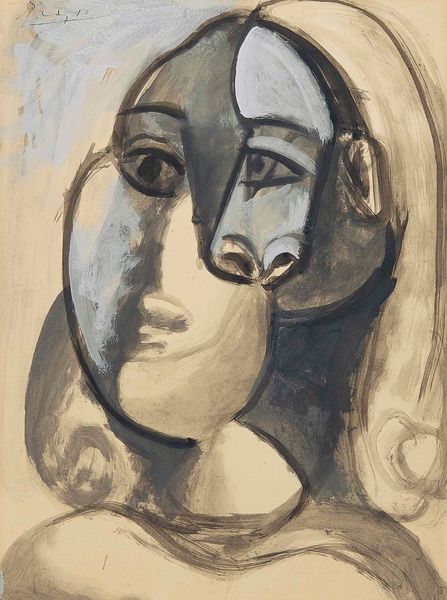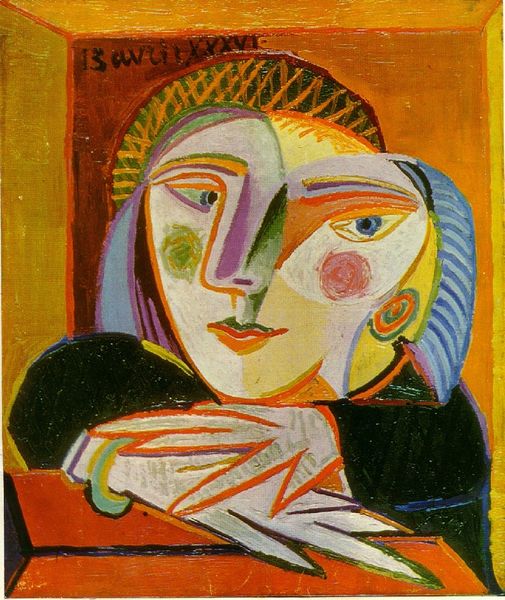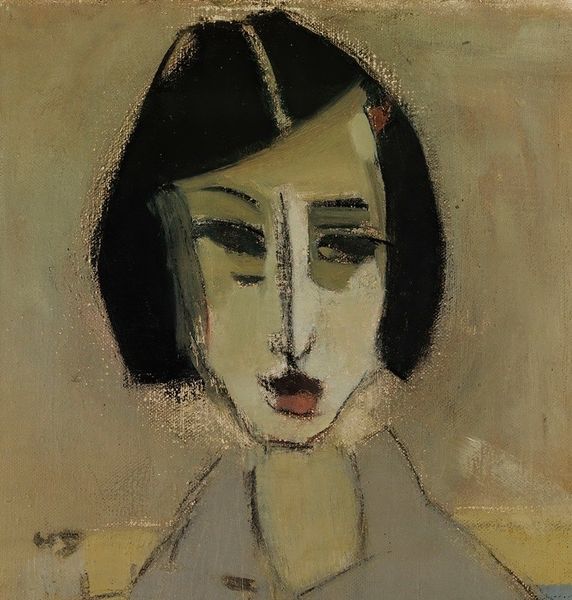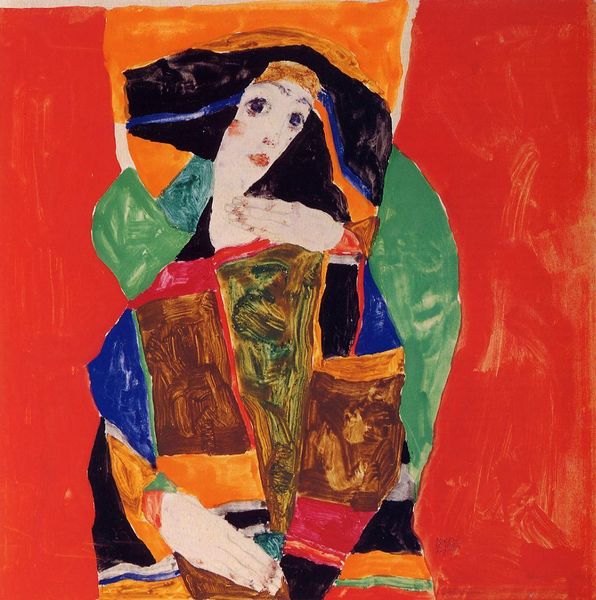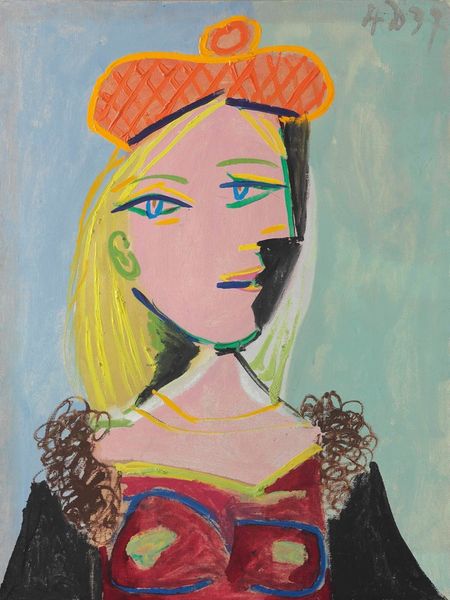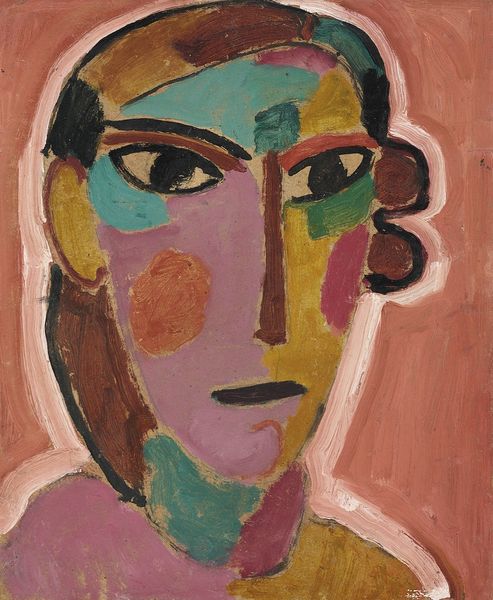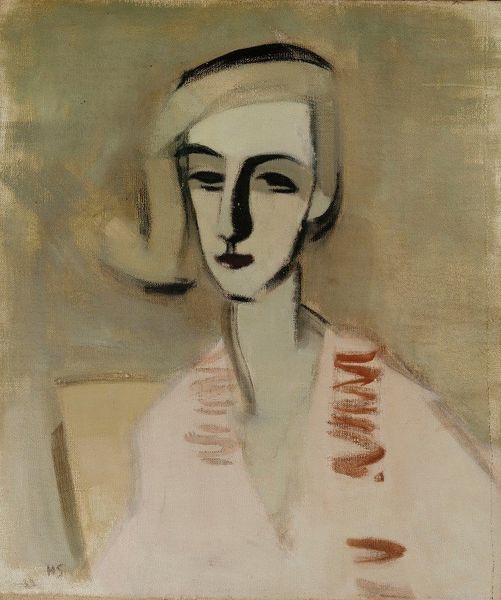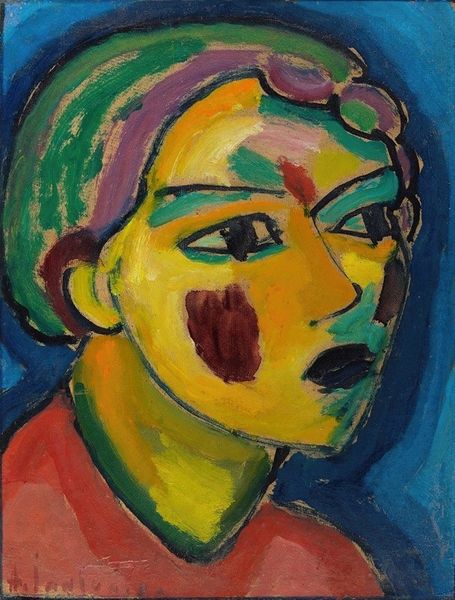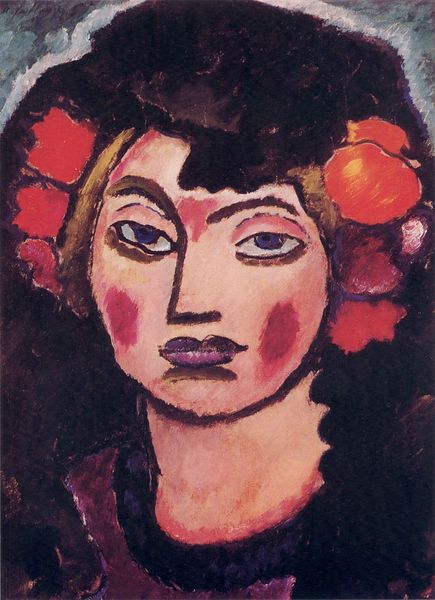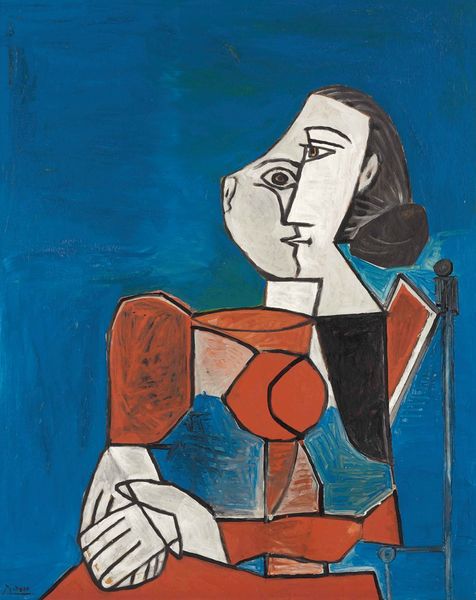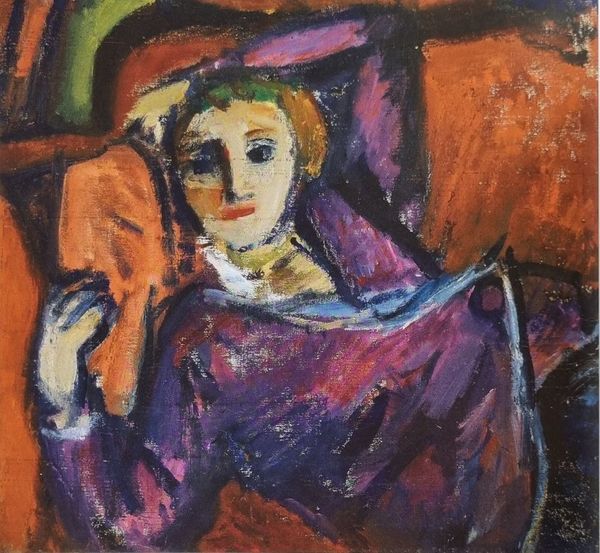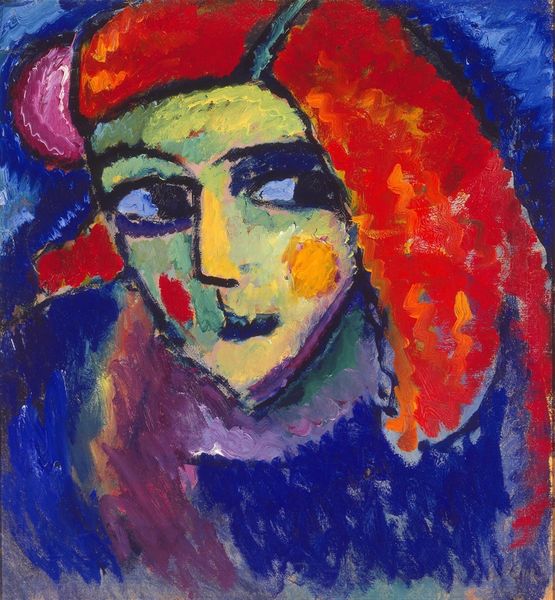
painting, oil-paint
#
portrait
#
cubism
#
painting
#
oil-paint
#
oil painting
#
modernism
Copyright: Pablo Picasso,Fair Use
Curator: Looking at Picasso's 1937 oil on canvas, "Portrait of Marie-Thérèse in a Red Beret," one immediately notices its startling chromatic contrasts. Editor: Indeed. My first thought is that there’s an unsettling coolness. Despite the warm red backdrop and the beret itself, her skin has this pale blue cast that gives it an almost ghostly quality. Curator: That cool tone is striking. If we think about it, the context of the oil paints he was using is important. This painting dates to right before some serious experimentation with commercial household paints—it predates his movement away from purely artisanal methods and paints produced by himself. It seems pertinent here when interpreting the work. Editor: It certainly draws our attention to the materials, doesn’t it? For me, what I find interesting is how the subject's gaze intersects with notions of female representation. Consider how Marie-Thérèse was frequently depicted; she was the younger lover and muse, positioned within a specific power dynamic. That context deeply influences my perception. Curator: Agreed. The painting shows Marie-Thérèse Walter near the end of their long relationship. His artistic style evolved significantly during their time together. Think how materials reflect shifts in both subject matter and artistic method during a prolific period in the history of twentieth-century art. Editor: Absolutely. The deconstruction of the face—a hallmark of cubism—feels less like an exploration of form and more like a fragmentation of identity, mirroring perhaps the societal expectations placed upon her, reducing her to fragmented components in his artistic endeavors. She appears very doll-like. Curator: What's fascinating to consider, also, is the labor behind the materials used in Cubism as a whole and how that has had influence of later materialist artists such as Andy Warhol—and his adoption of commercial art. Editor: And on the level of pure context we are not far removed from "Guernica". In the context of those increasingly dangerous and divisive times in Europe, Picasso’s portraits gain an even darker significance as they reveal more fractures. It becomes even more of an emotional work, reflecting a period of widespread fragmentation and tension. Curator: Indeed. Seeing his trajectory in the development and deployment of new mediums in that period really illustrates much about modern art's industrial roots. Editor: It pushes us to explore beyond surface aesthetics to see underlying tension and narrative, which encourages us to think more critically about what the work embodies, how these notions around representation interact and inform the piece, don’t you think?
Comments
No comments
Be the first to comment and join the conversation on the ultimate creative platform.


